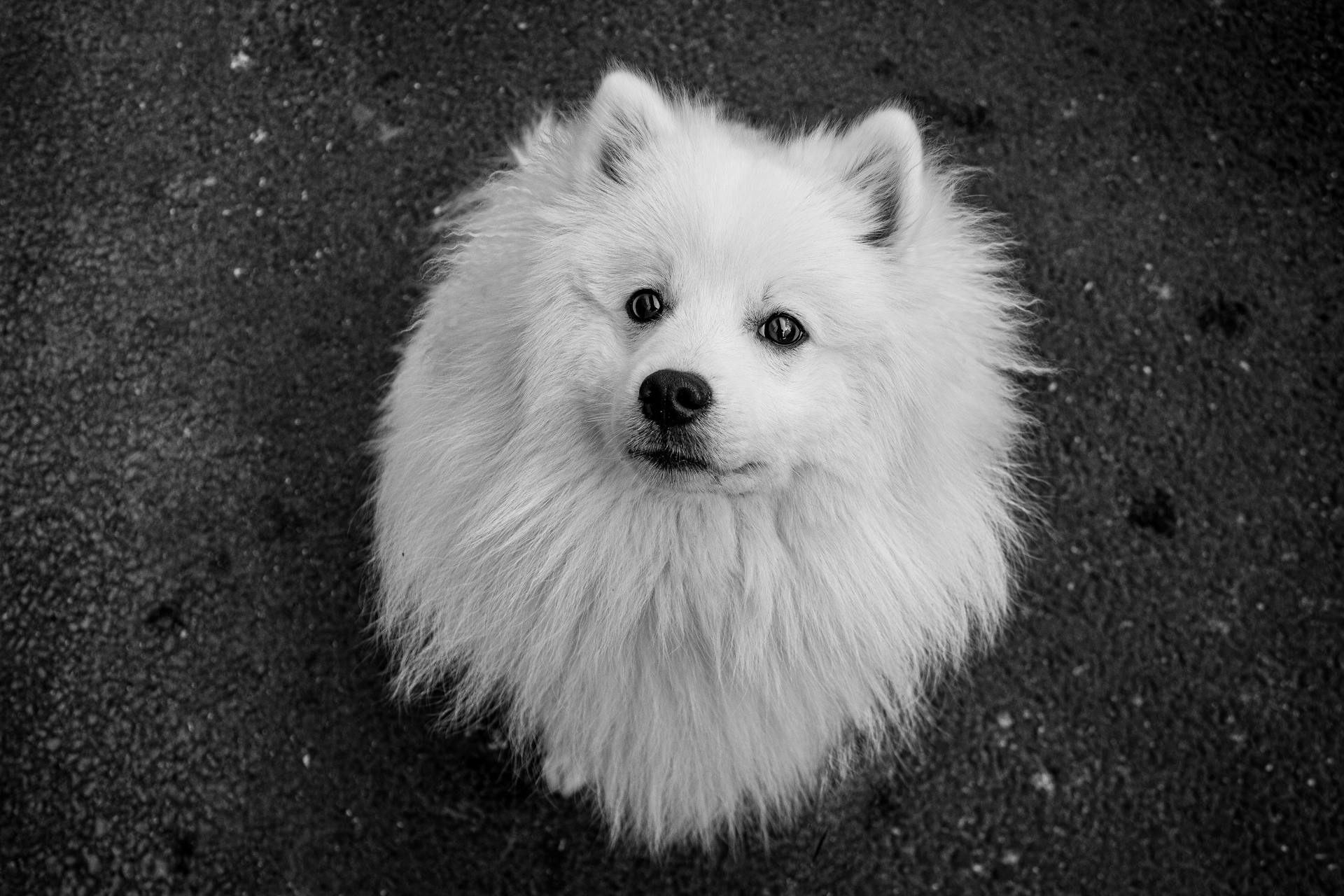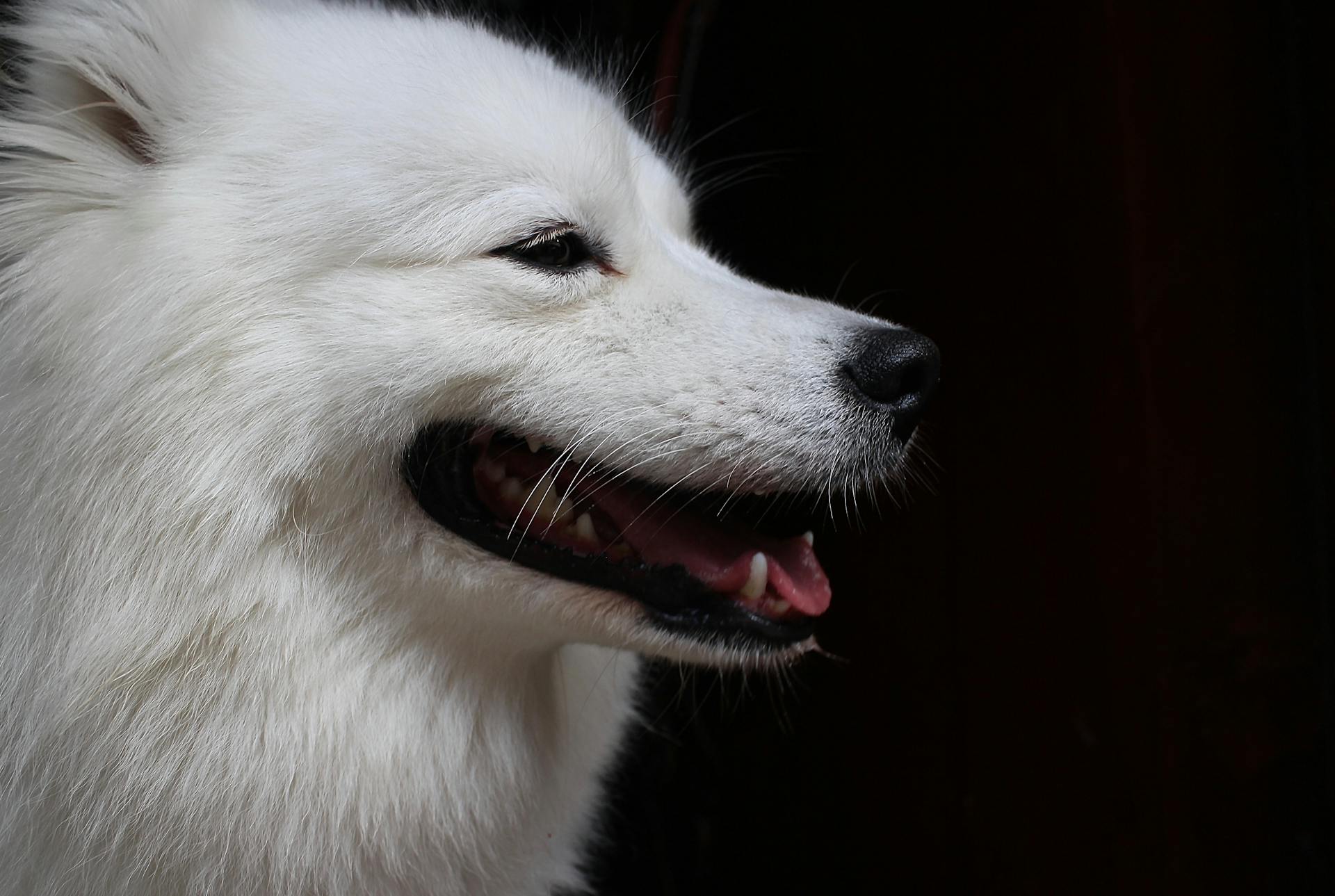
The Shikoku dog breed is a rare and ancient Japanese breed that's been around for centuries. They originated from the island of Shikoku, hence the name.
These dogs are small to medium-sized, typically weighing between 15-20 kg and standing between 35-45 cm tall. They have a short, straight coat that's usually red or brown in color.
The Shikoku dog is an energetic breed that requires regular exercise to stay happy and healthy. They need at least 30 minutes of exercise per day, whether it's a walk, run, or playtime in the yard.
Despite their high energy levels, Shikoku dogs are relatively quiet and don't bark much, making them a great choice for apartment dwellers.
Suggestion: Shikoku Dog Puppy
Breed History
The Shikoku dog is one of only six Spitz breeds native to Japan, originating on the island of Shikoku in the mountains of the Kochi Prefecture.
These dogs were developed by Japanese hunters, known as matagi, who remained true to ancient Japanese traditions. They were bred to be large game hunters and were first known as the Tosa Ken, but were eventually renamed due to confusion with the Tosa Fighting Dog.
Expand your knowledge: Japanese Tosa Dog
The Shikoku is a relatively pure breed that remained untouched for centuries due to its remote home in the mountainous terrain of Japan. This allowed the breed to maintain its athletic prowess and silent approach, making it an excellent hunting companion.
The breed was on the verge of extinction in the 1920s due to economic hardship in Japan, but a study by Haruo Isogai identified the Shikoku as one of only six breeds native to Japan with a Spitz heritage. This led to the formation of the Nihon Ken Hozonkai (NIPPO) in 1928, which dedicated itself to the preservation of the breed.
The NIPPO's initial focus was on the Shiba Inu and Akita, but they shifted their focus to the Shikoku in 1937 and declared it a living natural monument of Japan. This effort led to the development of three lines of Shikoku, named after the region within Kochi Prefecture where they originated: the Hata, the Awa, and the Hongawa.
The Shikoku was not well known outside of Japan until the late 1960s and early 1970s, when they were imported into countries in the western hemisphere. Today, the breed is recognized by the Canadian Kennel Club and the United Kennel Club, and is part of the American Kennel Club's Foundation Stock Service.
A unique perspective: Shikoku Dog Cost
Physical Characteristics
The Shikoku dog is a medium-sized breed, typically standing between 18.1-22 inches tall at the withers.
They come in a variety of colors, including sesame (red with black tipping), black and tan, red, and cream, although cream is a rare and non-standard color.
Their coat is fairly thick and sheds at least once or twice a year, with a softer undercoat and a straight, harsh topcoat.
Recommended read: White Golden Retreiver
Breed Appearance
The Shikoku is a medium-sized dog with a typical curled Spitz tail. They have a dense, double coat and erect ears.
Their eyes are almond in shape, slanted, and dark brown. They have a quizzical look to their sharp features.
A muscular dog with a compact body, they have a topcoat that is straight and harsh to the touch. The topcoat is longer around the neck and chest, on the tail, and forms feathering on the back of their legs.
They have a softer undercoat that is dense. Their close-fitting, well-rounded feet allow them to keep their footing on rough terrain.
Shikoku stands 18-22 inches high and comes in a variety of colors, including red sesame, black sesame, sesame, red, and black and tan. These colors are usually light brown, light reddish-brown, or light black-brown.
All these colors usually have a mixture of white on the underside of the body, near the eyes, muzzle, and feet. Shikoku sheds its coat at least once or twice a year.
The dog has a fairly thick coat with pointed ears and a curled tail. The body structure is usually spitz-type: square body, wedge-shaped head, prickly triangular ears, and feathery curved tail.
Readers also liked: Shiba Inu vs Shikoku
Coat Color and Grooming
The Shikoku's coat color is a beautiful aspect of their physical characteristics. They come in a variety of colors, including red, red-sesame, and blackish or black-sesame.
Their thick double coat is made up of a soft undercoat and a coarse outercoat. This coat blows seasonally, but regular weekly brushing can help manage shedding.
Readers also liked: Sesame Shiba Inu Puppy

The Shikoku's coat is naturally clean and has no doggie odor, making it a low-maintenance aspect of their grooming. They require only occasional bathing, and a good weekly brushing is usually sufficient.
Here are the recognized coat colors for the Shikoku breed:
- Red
- Red-sesame
- Blackish or black-sesame
It's essential to note that the Shikoku's double coat keeps them safe from the elements, but they should not be left outside in extreme weather. Regular nail trimming and ear cleaning are also crucial to prevent health issues.
Temperament and Personality
The Shikoku dog is a loyal and cautious breed that makes a great companion for the right owner. They can be wary of strangers and are a good judge of character, often avoiding people they don't like.
One of the key things to consider when owning a Shikoku is their need for socialization. They need to be introduced to new people, places, and experiences from an early age to prevent them from becoming overly aggressive.
Broaden your view: What Nutrients Do Dogs Need in Homemade Dog Food
A Shikoku's loyalty is unmatched, and they will fiercely protect their family if they feel threatened. However, this also means they can be a handful if they feel they can take the lead role within the family.
Children should be taught to respect a Shikoku's boundaries, as they can be too energetic for small kids. Older children who have been raised with a Shikoku will earn their trust and respect.
Here are some key temperament traits to keep in mind:
A Shikoku's high prey drive means they might not be the best fit for households with smaller pets, such as cats or guinea pigs. However, with proper socialization and training, they can get along with other dogs and even become a great companion for kids who learn how to approach and play with them gently.
Care and Maintenance
Taking care of a Shikoku dog requires a lot of time and effort, but it's worth it for the companionship and love they provide. You should be prepared to dedicate plenty of time to their exercise, grooming, and training needs.
A unique perspective: When Is Best Time to Breed Dog
Shikoku dogs are seasonal shedders, shedding heavily once or twice a year. They have a dense double coat, so regular brushing is a must to keep their coat looking healthy and shiny. You'll need to brush them at least once a week, and use a deshedder or undercoat rake during heavy shedding seasons.
To prevent skin irritation, it's essential to use a mild shampoo when bathing your Shikoku. Bathing them every few months or even three times a year is sufficient, as they don't have a strong body odor. You should also check their ears weekly and clean as needed, and trim their nails every few weeks to prevent overgrowth.
Shikoku dogs are intelligent and active, so they need plenty of exercise and mental stimulation. Running, playing fetch, and agility events are all great ways to keep them happy and healthy. Regular veterinary checkups are also crucial to detect any health concerns early on.
Here's a quick checklist for Shikoku care and maintenance:
- Brush their coat at least once a week
- Use a deshedder or undercoat rake during heavy shedding seasons
- Bathe them every few months or three times a year
- Check their ears weekly and clean as needed
- Trim their nails every few weeks
- Provide plenty of exercise and mental stimulation
- Keep up with regular veterinary checkups
By following these care and maintenance tips, you can help your Shikoku dog live a happy and healthy life.
Health and Nutrition
The Shikoku is generally a healthy breed, but like all purebreds, they can be prone to certain genetic health issues. Responsible breeders test their adult Shikokus before breeding to ensure they don't pass on these problems.
Elbow, knee, or hip dysplasia is a common issue in Shikokus, caused by abnormal joint development. This can lead to limping or trouble standing up, sitting, or laying down.
Luxating patella, a condition that affects the knee joints, allowing them to slip out of place, can also occur in Shikokus. Epilepsy, a neurological disease that causes seizures, can be treated with medication.
Allergies are another potential issue, caused by environmental conditions, food, fleas, and specific substances. Shikokus can experience allergies, just like many other breeds.
A high-quality dog food is essential for Shikokus, and feeding them the right amount is crucial. Eating too much can lead to obesity, which can contribute to joint disorders like hip dysplasia and arthritis.
Suggestion: Bernese Mountain Dog Hip Dysplasia

Obesity can also lead to other serious health problems, such as diabetes. Consult your veterinarian to determine a healthy diet and portion schedule for your Shikoku.
Shikokus are prone to becoming overweight, which can increase their chances of hip or elbow dysplasia. To keep your Shikoku in good shape, measure their food and feed them twice a day, rather than leaving food out all the time.
Here are some potential health issues to be aware of in Shikokus:
- Elbow, knee, or hip dysplasia
- Luxating patella
- Epilepsy
- Allergies
Training
The Shikoku is a breed that requires consistent and fair leadership, so be prepared to train daily using positive techniques and rewards.
Training can be a challenge due to the breed's willful and independent nature, but with patience and persistence, you can overcome this hurdle.
It's essential to be aware of the Shikoku's high prey drive and potential territorial or aggressive behavior towards dogs and other animals, so early socialization is crucial.
If raised together, the Shikoku can live peacefully with another family pet, but this requires careful introduction and supervision.
The breed responds very well to training based on positive rewards rather than harsh or negative methods, so make sure to use treats and praise to encourage good behavior.
Shikokus are intelligent and love to learn new tricks, making them a joy to train if you're consistent and patient.
They are reserved and aloof with strangers, so early socialization is vital to curb overprotectiveness and help them become confident in new situations.
Explore further: New York Bernese Mountain Dog Breeders
Frequently Asked Questions
Do Shikoku dogs bark?
Shikoku Kens are known to growl rather than bark, which can be a concern for apartment living. They may not be the best fit for households seeking a quiet canine companion.
Are Shikoku dogs hypoallergenic?
No, Shikoku dogs are not hypoallergenic due to their dense double coat. Regular grooming is necessary to maintain their coat's health and appearance.
How much does a Shikoku Ken cost?
The cost of a Shikoku Ken can range from $3,000 to $6,000 or more, depending on factors like dog quality and shipping fees. If you're interested in bringing a Shikoku Ken into your family, there's more to learn about this breed.
What is the life expectancy of a Shikoku Ken?
A Shikoku Ken's average lifespan is 12-15 years. However, with proper care, some may live longer, but they can be prone to certain health issues.
Is a Shikoku dog related to Shiba Inu?
Yes, the Shikoku dog is related to the Shiba Inu, as both breeds are part of the Spitz family and are native Japanese breeds. The Shikoku is actually larger than the Shiba Inu, but shares a similar ancestry.
Featured Images: pexels.com


